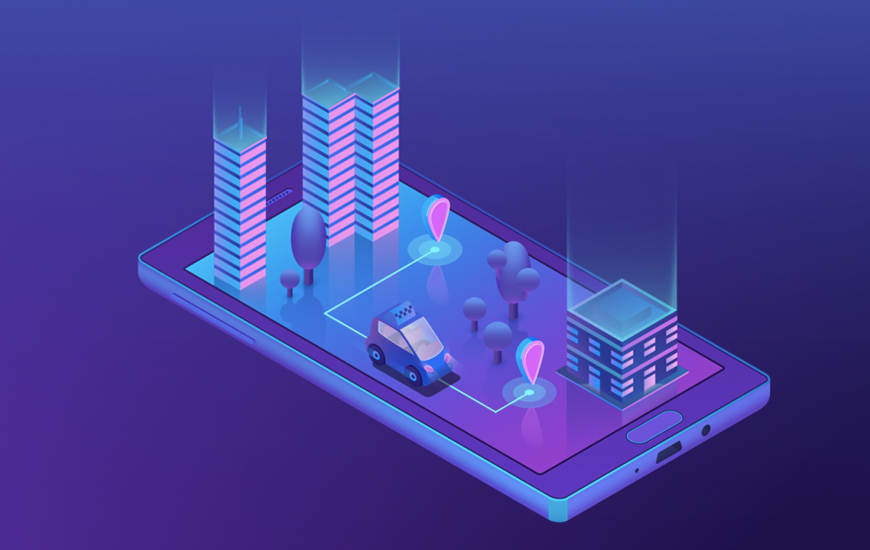
Exploring the World of Augmented Reality (AR) and Virtual Reality (VR) App Development
By Udit Agarwal

In recent years, Augmented Reality (AR) and Virtual Reality (VR) technologies have rapidly transformed from futuristic concepts to mainstream applications across various industries. With the growing popularity of AR and VR, the demand for innovative and immersive experiences through mobile apps has surged. As a result, developers are exploring new horizons in AR and Virtual Reality app development, ushering in an era of unparalleled interactivity and engagement.
Understanding Augmented Reality and Virtual Reality
Augmented Reality (AR) overlays digital information or virtual objects onto the real world, enhancing the user’s perception of reality. AR apps use the device’s camera and sensors to blend digital content seamlessly with the physical environment. Famous examples of AR apps include Pokémon GO, IKEA Place, and Snapchat’s AR filters.
On the other hand, Virtual Reality (VR) creates an entirely immersive digital environment that users can interact with using specialized VR headsets or devices. VR apps transport users to virtual worlds where they can explore, create, and experience incredibly lifelike scenarios. Gaming, entertainment, training simulations, and therapy all utilize VR.
The Rise of AR and Virtual Reality App Development
AR and Virtual Reality app development have gained traction across various industries due to their ability to revolutionize user experiences and drive engagement. Businesses leverage AR and VR technologies to create compelling marketing campaigns, enhance customer experiences, and streamline operations.
In retail, AR apps enable customers to visualize products in their real-world environment before purchasing, reducing the need for physical stores and enhancing online shopping experiences. Similarly, VR simulations are used in employee training programs to provide hands-on learning experiences in a safe and controlled environment.
AR and VR apps are transforming medical training, patient care, and surgical procedures in the healthcare industry. Surgeons use VR simulations to practice complex surgeries, while patients benefit from Virtual Reality therapy sessions to manage pain and anxiety.

Critical Considerations in AR and VR App Development
Developing AR and Virtual Reality apps requires a comprehensive understanding of the underlying technologies, user interfaces, and hardware compatibility. Here are some critical considerations for developers venturing into AR and VR app development:
- Technology Stack: Choose the appropriate development tools and platforms for building AR and VR applications. For AR development, popular frameworks like ARKit (iOS) and ARCore (Android) provide robust features and capabilities. For VR development, Unity and Unreal Engine platforms offer powerful tools for creating immersive virtual experiences.
- User Experience (UX) Design: Design intuitive user interfaces and interactions that enhance the overall user experience in AR and VR environments. Consider spatial awareness, gesture-based controls, and feedback mechanisms to ensure seamless navigation and engagement.
- Content Creation: Create compelling content that leverages the unique capabilities of AR and VR technologies. Incorporate high-quality 3D models, animations, and audiovisual effects to immerse users in captivating virtual worlds.
- Optimization and Performance: Optimize AR and Virtual Reality apps for performance, responsiveness, and compatibility. Minimize latency, optimize graphics rendering, and ensure smooth frame rates to deliver an immersive and seamless experience across different devices and platforms.
- Testing and Iteration: Conduct thorough testing and user feedback sessions to identify and address issues or usability concerns. Iterate on the app design and functionality based on user feedback to improve the overall user experience.
Future Trends and Opportunities
As AR and VR technologies continue to evolve, the future of app development holds exciting possibilities. Emerging trends such as Mixed Reality (MR), which combines elements of AR and VR, will enable even more immersive and interactive experiences. Additionally, advancements in hardware, such as lightweight AR glasses and standalone Virtual Reality headsets, will make these technologies more accessible to a broader audience.
Furthermore, the integration of AI and machine learning algorithms will enhance the intelligence and interactivity of AR and Virtual Reality applications, enabling personalized experiences and real-time adaptive content delivery.
In conclusion, AR and VR app development represents a dynamic and rapidly evolving field with vast potential for innovation and creativity. By leveraging these technologies effectively, developers can create transformative experiences that redefine how users interact with digital content and engage with the world around them.